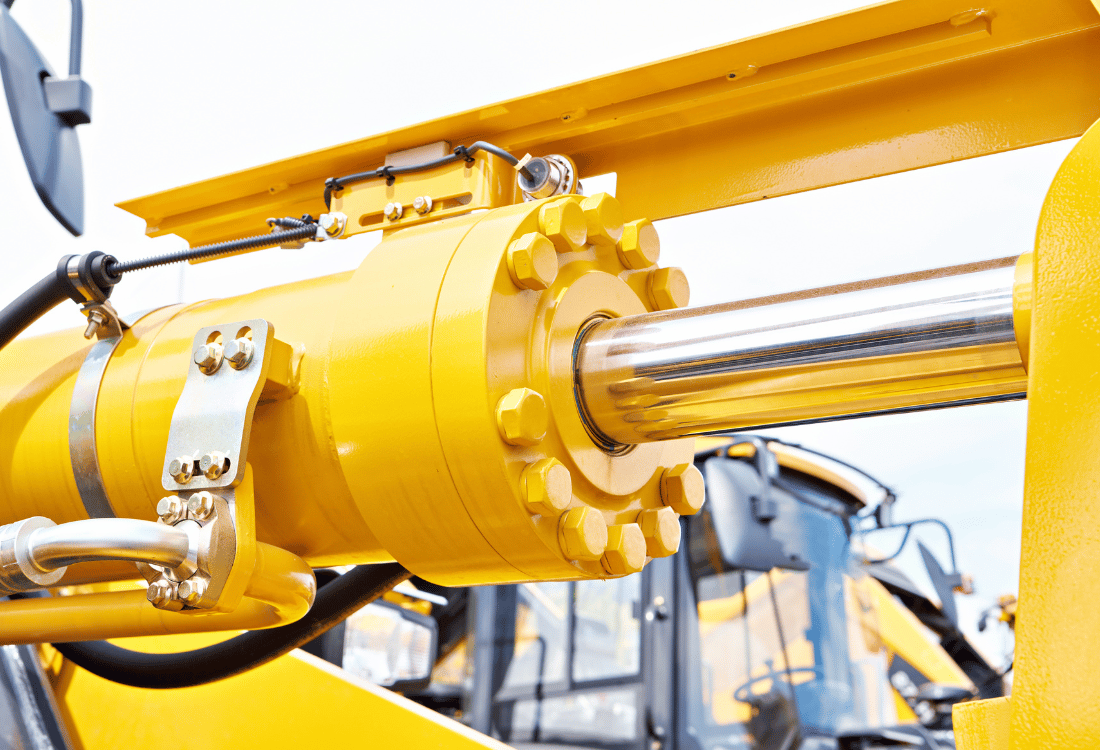The international hydraulic cylinder industry is experiencing an interesting period of diversification and growth, driven by a variety of technological and market changes. The UK, in particular, is strongly positioned to leverage this growth due to the strong focus of many sectors on renewable energy, innovation, and infrastructure investment.
The Labour government’s Green Prosperity Plan, which includes the ambitious goal to ‘make Britain a clean energy superpower’, could provide opportunities for businesses reliant on hydraulic technologies due to its focus on clean energy and decarbonisation. This builds on the £12 billion earmarked for the sector by the previous Tory administration as part of their 10 Point Plan For A Green Industrial Revolution in 2020.
In this article, we’ll look at the main drivers and challenges affecting the outlook of the global fluid power industry.

Mechanisation In Agriculture
The transition from human and animal powered farming to mechanised farming, something we take for granted in the modern West, is now accelerating across the world, driven by the need to meet rising food demands. Hydraulic cylinders and fluid power systems are integral to agricultural machinery including combine harvesters, precision planters, and tractors, powering critical functions like steering, lifting, and operating attachments.
The demand for cheap, high-quality, and energy-efficient hydraulic systems is driving an explosion of demand in the agricultural sector and beyond. The development of smart farming technologies also aligns with this trend. For example, hydraulic actuators integrated with IOT platforms allow British farmers to monitor and adjust the performance of some agricultural plant (e.g. sprinkler and irrigation systems) remotely, with potential benefits to crop yields. These innovations in precision, materials, and control systems could, in the coming years, help to offset the challenge of high manufacturing costs associated with many current hydraulic cylinders and other fluid power components.
Modern Construction Plant
The global boom in commercial and residential construction is one of the main factors driving demand for fluid power systems. Construction machinery relies heavily on modern hydraulic power systems to perform their heavy lifting and precision tasks in infrastructure and building projects. In the UK, the construction sector provides plenty of opportunities for an expansion of fluid power systems. Large-scale infrastructure projects such as the Thames Tideway Tunnel and offshore windfarm expansions in the North Sea have increased the reliance of many applications on hydraulic-powered machinery. In residential construction, meanwhile, the offsite/onsite hybrid ‘modular construction method’ is driving further innovations in hydraulic design, with a crossover between the way hydraulic systems are used in manufacturing and construction settings.
The Green Energy Transition
Renewable energy systems – especially wind and solar power plants – are a rapidly growing market for hydraulic systems. From China and India to the Irish Sea, wind turbines depend on hydraulic mechanisms for their blade pitch control, which improves efficiency by allowing the turbine to micro adjust their blade angles in response to wind conditions. In a similar way, solar plants use hydraulic systems linked to tracking mechanisms to align panels with the direction of the sun throughout the day for maximum energy capture. Wind energy is big news here in the UK, with enormous offshore installations such as the Dogger Bank Wind Farm forecast to generate up to 5% of the nation’s electricity demand by 2026.
Find Out More
Get in touch with HydraStar today to find out about our innovative approach to hydraulic design and how we can support you to make your applications leaner, greener, and more efficient.
Image Source: Canva


